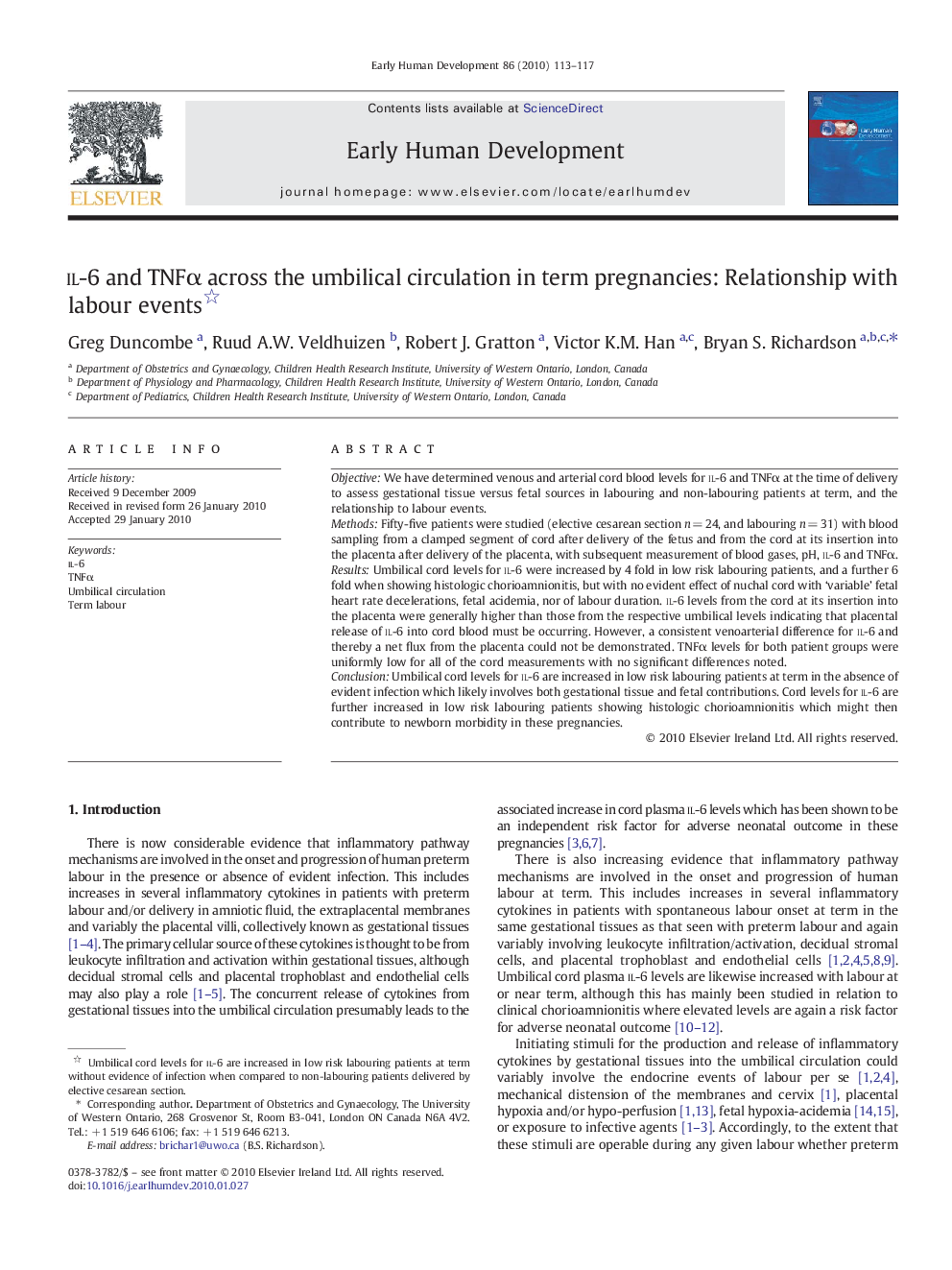| Article ID | Journal | Published Year | Pages | File Type |
|---|---|---|---|---|
| 3917698 | Early Human Development | 2010 | 5 Pages |
ObjectiveWe have determined venous and arterial cord blood levels for IL-6 and TNFα at the time of delivery to assess gestational tissue versus fetal sources in labouring and non-labouring patients at term, and the relationship to labour events.MethodsFifty-five patients were studied (elective cesarean section n = 24, and labouring n = 31) with blood sampling from a clamped segment of cord after delivery of the fetus and from the cord at its insertion into the placenta after delivery of the placenta, with subsequent measurement of blood gases, pH, IL-6 and TNFα.ResultsUmbilical cord levels for IL-6 were increased by 4 fold in low risk labouring patients, and a further 6 fold when showing histologic chorioamnionitis, but with no evident effect of nuchal cord with ‘variable’ fetal heart rate decelerations, fetal acidemia, nor of labour duration. IL-6 levels from the cord at its insertion into the placenta were generally higher than those from the respective umbilical levels indicating that placental release of IL-6 into cord blood must be occurring. However, a consistent venoarterial difference for IL-6 and thereby a net flux from the placenta could not be demonstrated. TNFα levels for both patient groups were uniformly low for all of the cord measurements with no significant differences noted.ConclusionUmbilical cord levels for IL-6 are increased in low risk labouring patients at term in the absence of evident infection which likely involves both gestational tissue and fetal contributions. Cord levels for IL-6 are further increased in low risk labouring patients showing histologic chorioamnionitis which might then contribute to newborn morbidity in these pregnancies.
